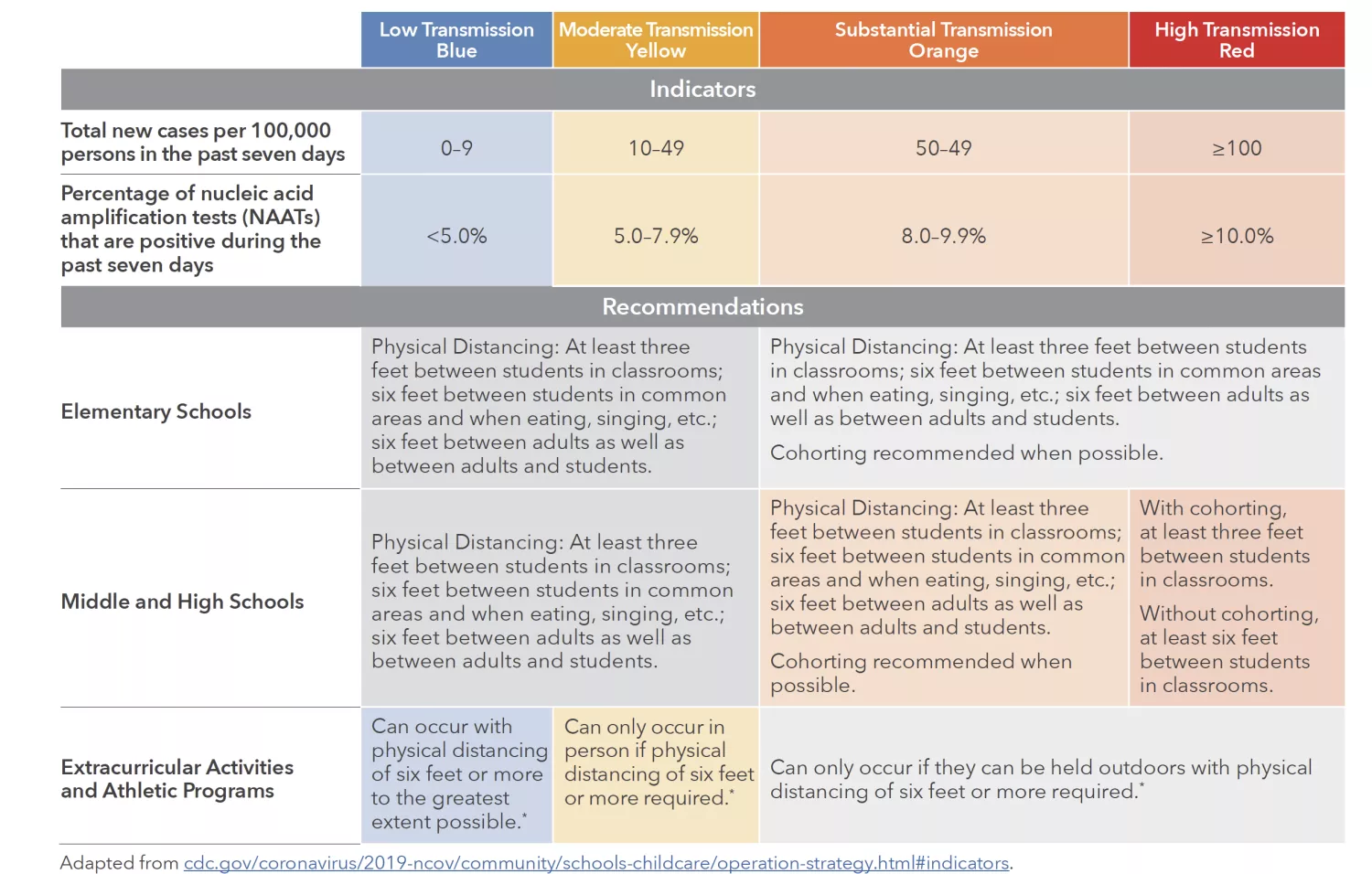Review levels of Community Transmission.*
Levels of community transmission can be determined by looking at the CDC COVID-19 Data Tracker for county-level data. As CDC states in guidance updated on March 19, 2021, the higher the level of community transmission, the more likely it is to have COVID-19 positive individuals in schools, which can lead to in-school transmission if prevention measures are not in place and enforced.
CDC also cautions that "[w]hen cases are introduced into the school environment, they can lead to clusters and potentially to rapid and uncontrollable spread," and that this is more likely to occur in areas of substantial or high community transmission.
According to CDC, "Five key prevention strategies are essential to safe delivery of in-person instruction and help to prevent COVID-19 transmission in schools": universal and correct use of masks; physical distancing; handwashing and respiratory hygiene; ventilation, cleaning, and maintaining healthy facilities; and contact tracing in combination with isolation an quarantine.
RECOMMENDED DISTANCING AND COHORTING BASED ON COMMUNITY TRANSMISSION.*
CDC developed recommendations based on the levels of community transmission.

For more information, review the CDC guidance and ED Handbook.
HOW TO CREATE SAFE, JUST & HEALTHY SCHOOLS
Ensuring our school communities are safe, just, and healthy places to learn not only protects us from the spread of COVID-19 but also helps us improve school conditions so that our students, educators, and staff—whether Black, brown, or white, Native or newcomer—can thrive. Together, we can advocate for the schools our students, educators, and communities deserve.
Every student has the right to learn in a supportive environment. To do so, policymakers must provide the necessary funding for resources—including supplies, building modifications, staffing, and access to COVID-19 testing as well as resources and training for virtual learning—and prioritize those communities that have been historically under-served and disenfranchised. The CDC's March 19 revisions to its guidance on distancing to allow for only three feet of distancing between students in classrooms, while continuing to require six feet elsewhere in school facilities, will be particularly challenging in under-resourced, crowded schools. It is crucial that we continue to advocate for equity and amplify the concerns of the student populations and communities that continue to be marginalized in decision-making around school opening.
Our public schools help keep our communities connected even as they help stop the spread of COVID-19 by educating students at home. Creating safe and healthy virtual and hybrid learning environments for our students takes all of us doing our part but also requires district and school leaders to implement plans that ensure all students have the resources they need to succeed, including regular check-ins, mental health services, meals, and technology.
NEA MEMBERS: ACT NOW
Contact your state-elected officials and district leaders and demand that your school receives the necessary funding and supplies to properly implement CDC mitigation strategies.
Support strong public schools. Visit the NEA Education Votes website and urge Congress to take action.
Share this guidance with your fellow educators and school leaders.
*Based on CDC guidance and ED Handbook. As of March 19, 2021, the ED Handbook had not been updated to correspond with the updates to the CDC guidance.
Join Our Movement


